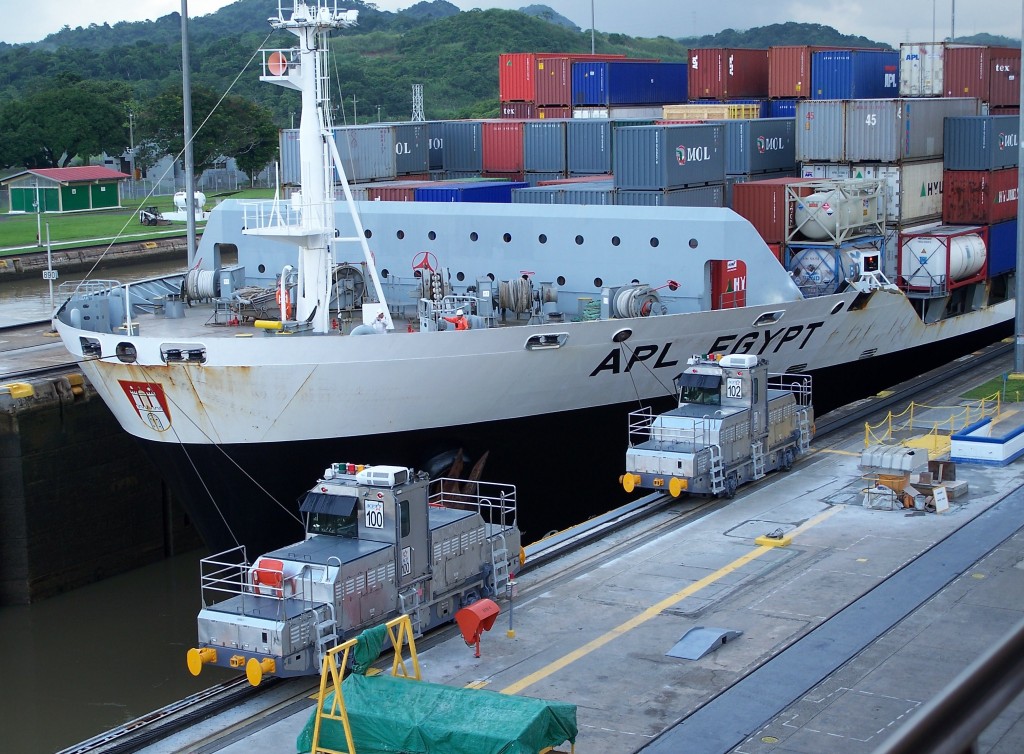The Toyota relocation to North Texas is one of the largest such corporate relocation in recent memory. As others have mentioned, the move was about business climate factors, such as taxes and regulations.
I think that there is another reason for businesses leaving the West Coast and moving to Texas, i.e. the expansion of the Panama Canal!
In the next ten years, large ships will be able to cross the Canal and go to Houston, a port in “a right to work state” and with quicker access to much of the country. New Orleans and other Gulf of Mexico ports will also benefit.
According to a recent NBC news report:
An estimated $5.25 billion is now being spent to deepen and widen the Panama Canal’s Pacific and Atlantic entrance channels, to raise the water level of Gatun Lake — through which all ships must pass — and to install new locks on both sides of the waterway. It’s due to open in April 2015.
The project is a response to a problem.
The canal is reaching its maximum capacity.
It’s carrying more traffic than it was designed for and is unable to handle the Fabiolas of the world. Termed “post-Panamax” vessels, these huge ships carry more than a quarter of the world’s containerized maritime shipments.
Today, cargo crossing the Pacific bound for the Midwest and Eastern United States must offload at a U.S. Pacific Coast port if the ship carrying it is too large to pass through the canal’s 50-mile waterway.
These goods are then routed across the country using the U.S. “land bridge,” the network of highways and railways linking East and West.
Once the widened canal is navigable, many megaships will no longer need the land bridge.
Instead, they will pass through the canal’s wider locks to offload their cargo at a Gulf or East coast port, such as Houston, New Orleans or New York.
“Trade will shift,” Bachkar said. “Instead of coming to the West Coast, it will go directly to the East Coast and on to Europe.”
These eastern ports are hoping the canal expansion will signal the end of an era — the end of the so-called West Coast Empire.
Ports such as Savannah, Ga., New Orleans, Houston and New York City are preparing for this change by pouring billions of dollars over the next few years into infrastructure development, while the ports of the West Coast walk a fine line between confidence and caution in the face of what may be the single largest threat to their livelihoods ever.
“The West Coast has done well with Asian trade over the last 30 years,” said Port of New Orleans spokesman Matt Gresham. “This will make things more competitive.”
And in an industry where one port can generate billions of dollars in state and local tax revenues and affect the lives of more than 3 million industry-related employees throughout the U.S., any change is a big deal.
The expansion of the Canal will put more pressure on California, specially its inability to compete with more modern ports in “right to work” states.
Los Angeles will continue to be a major player because of its infrastructure and history. However, it will be a lot more difficult, as The LA Times reported recently:
A major expansion of the Panama Canal is raising alarms in Southern California, where business, labor and public officials are warning that the project threatens to dent the region’s role in international trade.
The $5.25-billion project will make the canal wider and deeper, allowing huge freighters from Asia to bypass West Coast ports and head straight to terminals on the Gulf Coast and East Coast. The neighboring ports of Los Angeles and Long Beach, which together handle about 40% of the nation’s imported Asian goods, could lose as much as a quarter of their cargo business by some estimates after the Panama expansion is completed in 2014.
